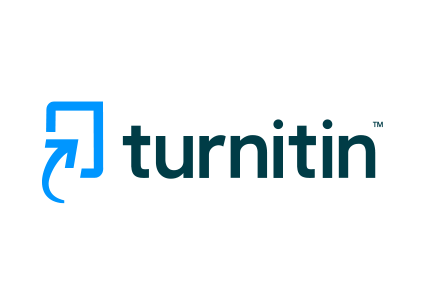LITERATURE STUDY ON THE EFFECTIVENESS OF THE BLENDED LEARNING MODEL IN DEVELOPING COUNTRIES
Keywords:
blended learning, effectiveness, education, developing countries, technology, infrastructureAbstract
This study examines the effectiveness of the blended learning model in developing countries through a literature review. Blended learning, which combines face-to-face and online learning, is believed to have the potential to improve the quality of education. Studies show that this model can increase learning motivation, provide a variety of learning resources, and enable more active interaction between students and teachers. However, the implementation of blended learning in developing countries faces significant obstacles, including problems with technological infrastructure, limited internet access, and technological readiness among both students and teachers. This study emphasises the need for multidisciplinary collaboration in terms of improving technological infrastructure, training in technological skills, and providing adequate educational resources so that the implementation of blended learning can be more effective. The results of this study are expected to provide insights for policy makers and educators in implementing and optimising the blended learning model in developing countries.
References
Abdullahi, A. M. (2023). Blended Learning Effectiveness in Nigerian Universities: A Comparative Study. Journal of Interactive Media in Education, 25(4), 89–102.
Al-Badwawi, H. (2022). Exploring Blended Learning in Oman: Perceptions and Challenges. International Journal of Educational Technology in Higher Education, 19(1), 1–20.
Allen, I. E., & Seaman, J. (2022). Digital Learning Compass: Blended and Online Learning in Higher Education. Pearson.
Banerjee, A., & Duflo, E. (2023). Technology-Enhanced Learning in Developing Countries: Evidence from Randomized Evaluations. Journal of Economic Perspectives, 37(2), 125–148.
Chandra, V., & Fisher, D. (2023). Implementing Blended Learning in India: Challenges and Opportunities. Educational Research for Policy and Practice, 23(3), 321–344.
Fatimah, S. & Sugilar. (2023). Analyzing the Effectiveness of Blended Learning Models in Higher Education in Indonesia. International Journal of Educational Policy and Leadership, 18(1), 45–67.
González, C. (2023). Implementing Blended Learning in Latin America: Case Studies and Best Practices. Innovations in Education and Teaching International, 60(5), 507–524.
Gough, D., Thomas, J., & Oliver, S. (2012). An Introduction to Systematic Reviews. SAGE Publications Ltd.
Graham, C. R., Allen, I., & Ure, D. (2022). Blended Learning: Research Perspectives Volume 3. Routledge.
Hill, M., & Varone, F. (2017). The Public Policy Process (7, Ed.). Routledge.
Mariska, T., & Aslan, A. (2024). TECHNOLOGY-BASED CURRICULUM MODEL. International Journal Of Humanities, Social Sciences And Business (INJOSS), 3(2), 322–332.
Matland, R. E. (1995). Synthesizing the Implementation Literature: The Ambiguity-Conflict Model of Policy Implementation. Journal of Public Administration Research and Theory, 5(2), 145–174.
Mokoena, S. (2022). Assessing the Impact of Blended Learning on Student Performance in South Africa. South African Journal of Education, 42(4), 679–701.
Moore, M. G. (2023). Handbook of Blended Learning Strategies. Jossey-Bass.
Murad, M., & Abdelkader, M. (2022). Evaluating Blended Learning Models in the Middle East: A Comparative Study. Journal of Educational Technology & Society, 25(2), 77–92.
Nguyen, M. (2023). Urban Governance and Policies. Springer.
Norberg, A., Dziuban, C., & Moskal, P. (2023). The Blended Learning Book: Best Practices, Strategies, and Case Studies. Springer.
Owston, R. (2022). Blended Learning Effectiveness: The Relationship Between Student Characteristics, Design Features and Outcomes. Journal of Educational Technology Research and Development, 70(2), 905–926.
Reinders, H., & White, C. (2022). The Applied Linguistics of Blended Learning: Research and Practice. Cambridge University Press.
Smith, L. (2022). The Future of Policy Implementation. Policy Studies Journal, 50(1), 12–35.
Torraco, R. J. (2005). Writing Integrative Literature Reviews: Guidelines and Examples. Human Resource Development Review, 4(3), 356–367.
Tubagus, M., Haerudin, H., Fathurohman, A., Adiyono, A., & Aslan, A. (2023). THE IMPACT OF TECHNOLOGY ON ISLAMIC PESANTREN EDUCATION AND THE LEARNING OUTCOMES OF SANTRI: NEW TRENDS AND POSSIBILITIES. Indonesian Journal of Education (INJOE), 3(3), 443–450.
Webster, J., & Watson, R. T. (2002). Analyzing the Past to Prepare for the Future: Writing a Literature Review. MIS Quarterly, 26(2), xiii–xxiii.
Widjaja, G., & Aslan, A. (2022). Blended Learning Method in The View of Learning and Teaching Strategy in Geography Study Programs in Higher Education. Nazhruna: Jurnal Pendidikan Islam, 5(1), 22–36. https://doi.org/10.31538/nzh.v5i1.1852
Williams, R., & Perez, A. (2022). Cross-Border Policy Implementation. Policy & Society, 41(3), 500–520.
Wong, K. (2022). Blended Learning Perceptions and Effectiveness in Asian Higher Education. Asian Journal of Distance Education, 17(3), 45–64.










